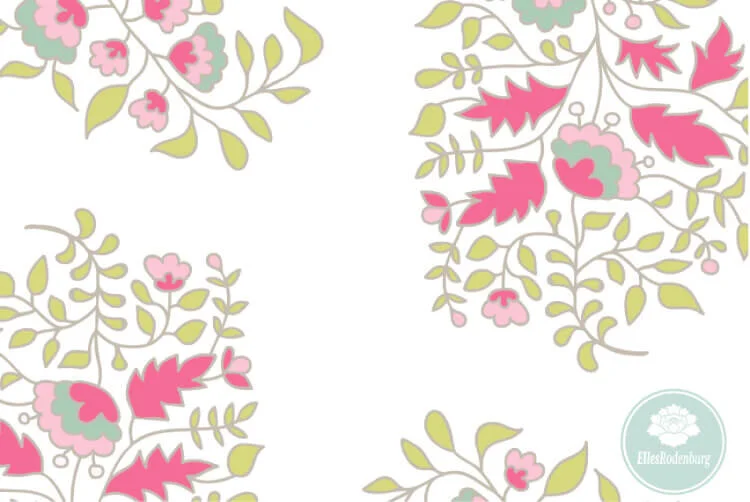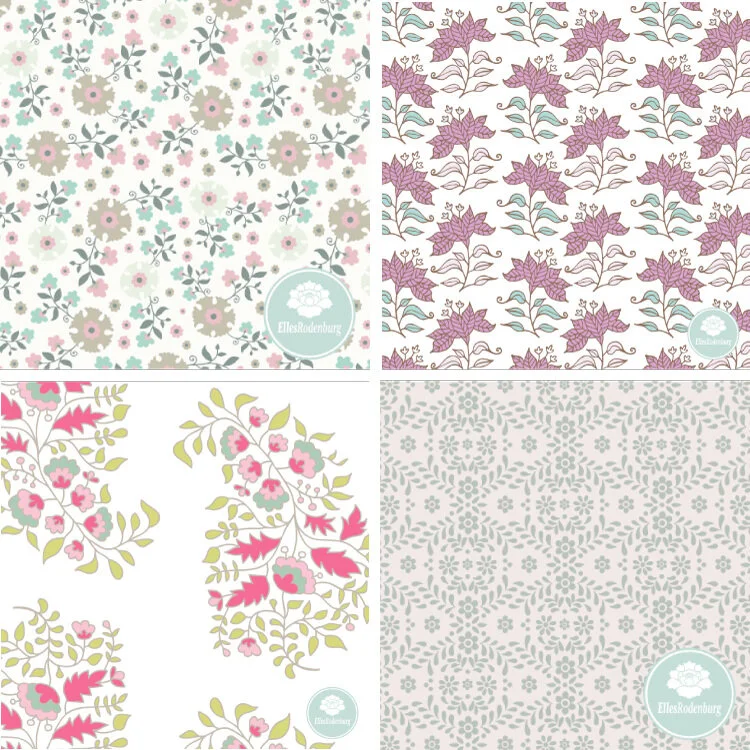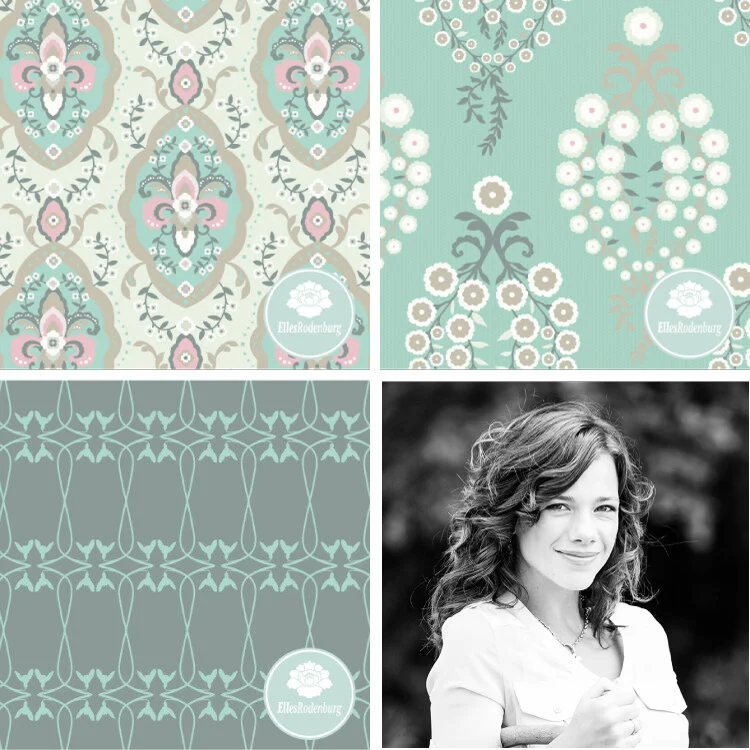Why Mood Boards Matter with Elles Rodenburg
Today I'd like to introduce you to the work of Elles Rodenburg. She is a Dutch pattern designer who creates beautifully romantic floral patterns, all of which explode with detail and depth.
Elles lives in Delft, a picturesque city in the Netherlands famous for the Delft Blue porcelain. Her design studio, where she creates her patterns, is also based in this city of blue.
When I spoke with Elles she talked about how important mood boards are to her creative process, and how they have helped her establish a signature style. I can't wait for you to read what she has to say...and to see her breathtaking mood boards. I have a feeling you'll become a fan of mood boards too!
Hi Elles! Can you tell us a little bit about your background as an artist and how you got into surface pattern design?
My background is in graphic design, and in 2009 I started my own business. I did graphic design and styling for a while, but quickly landed on photography as my main source of income. I really loved it, and had beautiful photography assignments. I took portraits, shot weddings and did lifestyle photography.
Eventually I discovered surface pattern design and started developing my skills in it at the same time I was working on my photography business. But then after my first daughter was born I discovered that I didn't have enough time to devote to both photography and surface pattern design. I realized that I had to make a choice. I could stay in photography or choose a new path as a surface pattern designer. I decided to follow my heart. I decided to embrace my entrepreneurial spirit and build my dream.
Elles Rodenburg patterns
How would you describe your signature style?
I would describe my style as classic with a twist. I like to keep things nostalgic, fresh and colorful. I like to mix styles, and love to make mood boards so that my patterns have a story behind them.
Embroidery Moodboard
So you are a fan of mood boards! Can you tell us a little bit about how you use mood boards in your work?
I always make a mood board when I’m in the beginning stages of developing a new pattern collection. It helps me gather ideas and inspiration, and quite often leads my work in a new direction. It helps make my work original.
When I start making a mood board I pull together images I love. Those images are amassed from a variety of sources: travel, nature, cultures, color, fashion and my photo archive. Some of the pieces inspire the style I’m going for. Others are purely for color inspiration or are to help me settle on a shape and texture.
During the design process mood boards help me focus on the direction I want my designs to take.
Why should someone who has never been into mood boards consider making them?
You may think mood boards are not for you, or that it is a waste of time, but mood boards are actually time savers and a great way to convey your design ideas.
They can help you ‘get inside your creative head’.Mood boards can also be useful when working with clients. They can help you convey a design idea that may be difficult to explain otherwise and can give clients an idea of what the finished product will look like. They allow everyone who is involved on the project to agree on a direction before too much work is done.
How would you suggest someone go about making a mood board?
There are many different ways to build out a mood board. Choose the one that works best for you.
Physical mood boards - Have physical objects mixed with images and materials pinned up on a real board. It becomes a piece of mixed media art and tells a rich story.
Digital mood boards - This is the most common type of mood board and is easier because you just upload images you like to your computer and lay them out on the screen. You can test out different layouts and re-arrange the images as you like.
Online mood board – You can use online mood boarding tools like Pinterest, Picmonkey or The Matboard. They all have their own unique style, so you'll have to find the one that appeals to you.
Paris Antique Moodboard
Every year you make a mood board for yourself to evaluate how your style has changed and solidify your signature style. What have you learned through this process?
While my style preferences and interests remain fairly consistent, I do find that they are influenced by trends and what I am doing in my everyday life. Sometimes I find that I'm drawn to a particular color or a new color palette. I don't expect that all of a sudden my style will be modern or minimalist, but I do see subtle shifts.
Overall, the yearly mood board gives me insight into myself and the styles, trends and direction I want my design business to take for the upcoming year.
And I do plan time in my schedule for trend watching. When I couple this with my signature style mood board it helps me interpret current trends into my designs while staying authentic and true to my signature style.
Any big does and don'ts for creating mood boards?
It’s all about capturing thoughts, ideas, impressions, themes and feelings.Do’s:
Spend time investigating and researching a specific theme or style. It’s definitely worth it because it brings you new ideas and insights.
Vary the size of the images you use.
Experiment with different shapes (Digital mood board)
Mix and match with images, typography, keywords, material and color samples.
Line images up and allow negative space between them.
Consider who will be seeing and using the board.
Go beyond the web, take photographs of things that inspire you. Then you won't have to worry about copyright on the images should you want to post them online or create a mood board for commercial use.
Don’ts
Limit yourself. The things you include on your mood board don’t necessarily have to relate directly to your project.
What advice would you give others who are interested in surface pattern design?
Go ahead and follow your heart. Even if you might have limited time to build your dream.
Try to do one thing every day to get closer to your goal. After a while when you look back you will see how much progress you’ve made.
Great things are done by a series of small things brought together’ –Vincent van Gogh
Want to see more of Elles' work? You can visit her website or find her on Pinterest.




